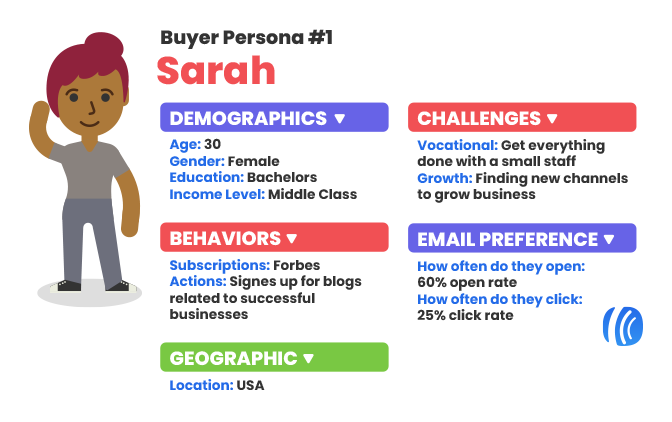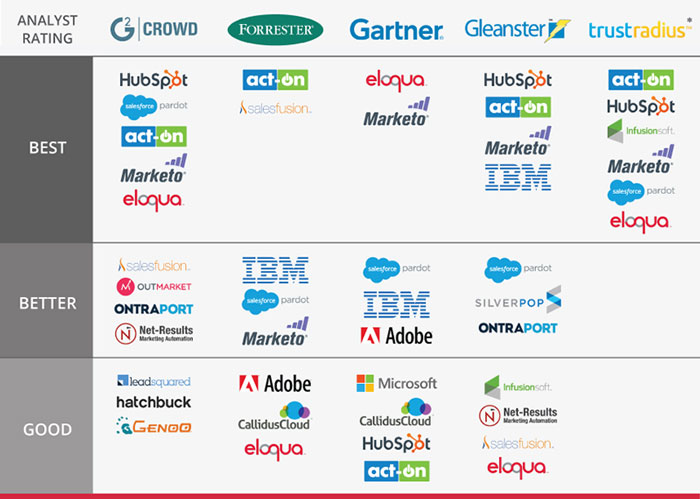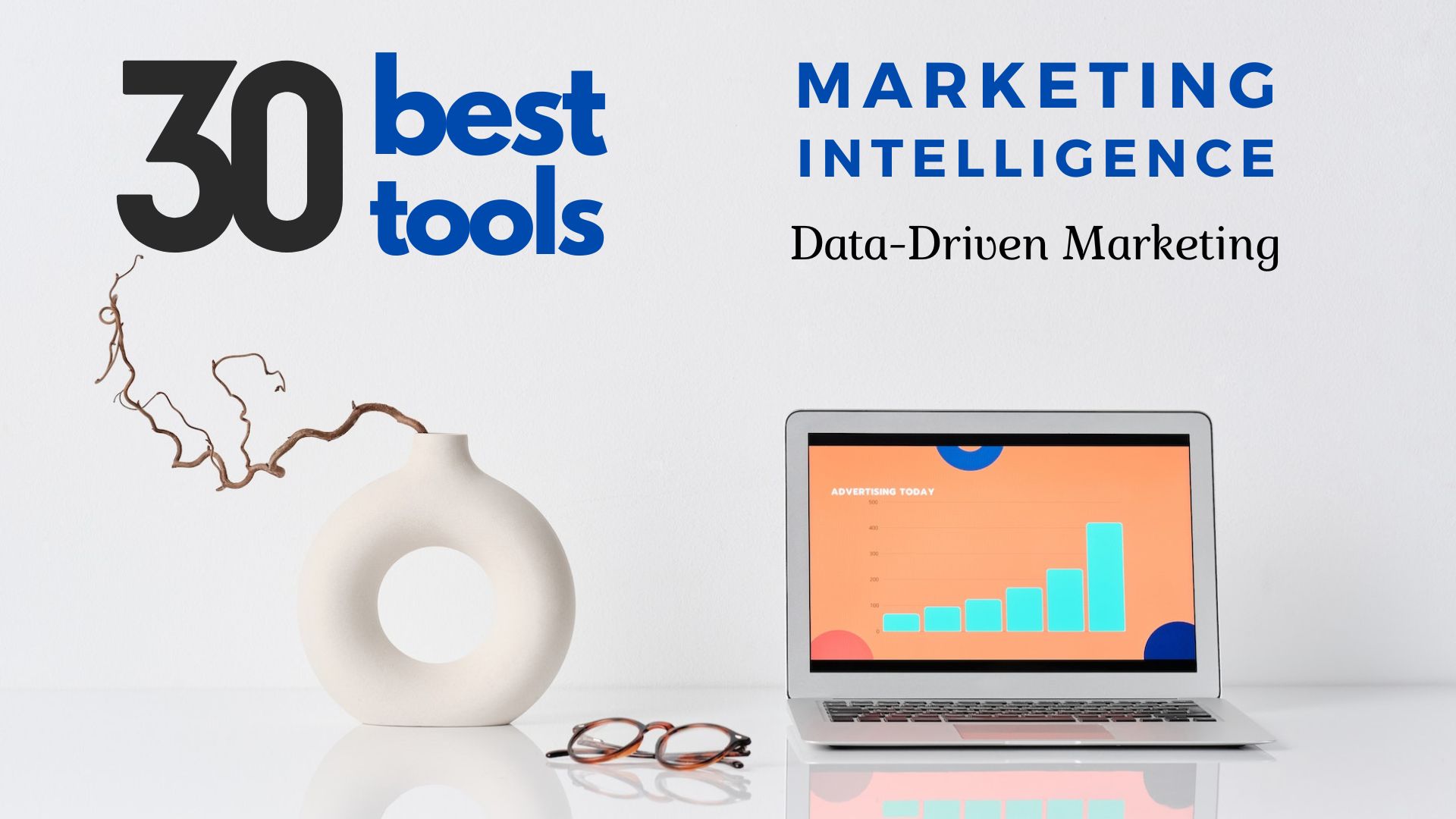Imagine having a tireless assistant who works 24/7 to nurture leads, personalize customer experiences, and boost your sales. Sounds too good to be true, right? Well, for small businesses, this dream can become reality with the magic of marketing automation.
Forget the misconception that marketing automation is just for big corporations. In today’s digital age, it’s a game-changer for small businesses too. Marketing automation helps you automate repetitive tasks, personalize outreach to convert leads into customers, and gain valuable insights to optimize your marketing efforts.
Ready to ditch the overwhelm and watch your sales soar? Let’s dive into the 5 steps that will put your small business on the fast track to marketing automation bliss.
Table of Contents
Define Your Marketing Automation Goals for Success
Before you jump into the exciting world of marketing automation tools and fancy workflows, it’s crucial to hit the pause button and define your goals. Think of marketing automation as your superhero sidekick. But even superheroes need a mission, right?
Here’s the deal: by setting clear goals upfront, you ensure your marketing automation efforts are laser-focused on achieving what truly matters for your small business. It’s like taking a road trip – you wouldn’t just get in the car and start driving aimlessly. You need a destination in mind to chart the best course.
So, what kind of goals can marketing automation help you achieve? Here are some common examples for small businesses:
- Generate high-quality leads: Turn website visitors into interested prospects by nurturing them with valuable content and automated email sequences.
- Nurture existing leads: Keep your brand top-of-mind with targeted email campaigns that educate and build trust with potential customers.
- Boost customer retention: Turn one-time buyers into loyal fans by sending personalized messages and exclusive offers.
- Increase sales: Automate abandoned cart reminders and follow-up emails to nudge potential customers towards completing their purchases.
Remember, the key is to choose 2-3 S.M.A.R.T. goals (Specific, Measurable, Achievable, Relevant, and Time-bound). This ensures your goals are clear, actionable, and aligned with your overall business objectives. By taking the time to define your goals, you’ll set your marketing automation journey up for success.

Know Your Audience: Building Buyer Personas for Targeted Outreach
Here’s the thing: marketing automation is all about sending the right message to the right person at the right time. But how can you do that if you don’t truly understand who your ideal customer is? That’s where buyer personas come in.
Think of a buyer persona as a detailed profile of your ideal customer. It’s like a mini-detective sketch, but instead of physical characteristics, you’re capturing their demographics, behaviors, needs, and pain points.
Imagine you’re writing a play. You wouldn’t just write generic dialogue, right? You’d tailor your characters’ lines to their personalities and motivations. Buyer personas work the same way. By understanding your audience on a deeper level, you can craft targeted marketing messages that resonate with them and drive results.
So, how do buyer personas help with marketing automation? Here’s the magic:
- Segmentation: Marketing automation platforms allow you to segment your audience based on the characteristics defined in your buyer personas. This means you can send highly personalized emails, social media messages, and landing page content that speaks directly to their interests and needs.
- Personalization: Ever had a creepy online ad follow you around the internet? Not cool, right? Buyer personas help you avoid that by allowing you to personalize your marketing messages in a genuine way. It’s the difference between a generic “Hey there!” and a targeted email that addresses their specific challenges and offers relevant solutions.
By investing time in creating buyer personas, you’ll lay the foundation for successful marketing automation. You’ll have a clear understanding of who you’re talking to, allowing you to craft content that converts and builds lasting relationships with your customers.

Picking Your Perfect Partner: Choosing the Right Marketing Automation Platform
Alright, you’ve defined your marketing automation goals and created detailed buyer personas. Now it’s time for the fun part: choosing your marketing automation platform!
Let’s be honest, with a ton of marketing automation tools out there, it’s easy to feel overwhelmed. But don’t worry, we’ll break it down for you.
Think of a marketing automation platform as your trusty sidekick in the marketing world. It’ll help you automate tasks, personalize outreach, and gain valuable insights. But just like choosing a friend, picking the right platform is crucial.
Here’s a quick rundown of some features commonly offered by marketing automation platforms:
- Email Marketing: This is a core feature, allowing you to create, schedule, and send targeted email campaigns to your audience.
- Social Media Scheduling: Save time by scheduling your social media posts in advance and managing them all from one platform.
- Landing Page Creation: Easily design high-converting landing pages to capture leads and nurture them into customers.
- Analytics and Reporting: Track the performance of your marketing campaigns and gain valuable insights to optimize your strategy.

Now, when it comes to choosing the right platform for your small business, there are a few key things to consider:
- Budget: Marketing automation platforms come in a range of price points. Determine how much you’re comfortable spending and choose a platform that fits your budget.
- Features Needed: Don’t get bogged down by fancy features you won’t use. Identify the functionalities that are essential for your marketing goals and choose a platform that offers those features.
- Ease of Use: A user-friendly platform is key, especially if you’re not a tech whiz. Look for a platform with a clean interface and intuitive features.
- Scalability: Consider your future growth plans. Will the platform be able to scale with your business needs?
While we can’t name specific platforms here, there are several reputable options available that cater to small businesses. Do your research, explore free trials, and choose a platform that feels like the perfect fit for your needs.
Suggested Reading: Marketing Automation Tools – Pardot vs Hubspot vs Marketo vs Keap
Craft Engaging Workflows to Nurture Leads: Let the Automation Flow!
Now that you’ve chosen your marketing automation partner, it’s time to unleash its true power: crafting automated workflows.
Imagine a workflow as a recipe for lead nurturing. You set the ingredients (emails, social media posts) and triggers (website visit, abandoned cart) to create a personalized journey that guides your leads towards becoming customers.
Here’s the beauty of workflows: they handle repetitive tasks while keeping your leads engaged. Think about it – how many times can you realistically send a follow-up email manually? With workflows, you can set up a series of automated emails that nurture leads based on their actions and interests.
Here are some common marketing automation workflows for small businesses:
- Welcome Email Series: Greet new subscribers with a warm welcome and introduce them to your brand story and offerings.
- Abandoned Cart Sequence: Remind website visitors who leave items behind in their carts with a gentle nudge to complete their purchase.
- Post-Purchase Follow-Up: Thank customers for their business, offer additional product recommendations, and encourage repeat purchases.
- Educational Drip Campaigns: Deliver valuable content over time to educate leads about your industry and establish yourself as a thought leader.

But remember, effective workflows aren’t just about automation; they’re about providing value. Here are some best practices to keep in mind:
- Keep it Personal: Use dynamic content to personalize your messages with the recipient’s name and interests.
- Provide Value: Focus on offering helpful information, exclusive content, or special promotions in your emails.
- Include a Call to Action: Tell your leads what you want them to do next, whether it’s visiting a landing page, downloading a resource, or making a purchase.
By crafting engaging workflows that nurture leads with valuable content and personalized messages, you’ll convert more prospects into customers and watch your sales climb.
Did It Work? Measuring and Analyzing Your Marketing Automation Success
Here’s the reality: you can’t improve what you don’t measure! Just like a superhero analyzes their performance after a battle, you need to track and analyze your marketing automation efforts to ensure they’re delivering results.
Think of it this way: imagine pouring all your time and energy into crafting amazing workflows, but having no clue if they’re actually converting leads. By tracking key metrics, you gain valuable insights that help you optimize your marketing automation strategy for maximum impact.
Here are some crucial metrics to monitor your marketing automation success:
- Open Rates: This metric shows the percentage of recipients who open your emails. A healthy open rate indicates your subject lines are compelling and your audience is interested in what you have to say.
- Click-Through Rates (CTR): This metric measures the percentage of people who click on a link within your email. A high CTR suggests your emails are engaging and effectively lead recipients towards your desired action.
- Conversion Rates: This is the ultimate metric, indicating the percentage of leads who convert into paying customers as a result of your marketing automation efforts.
- Customer Lifetime Value (CLTV): This metric tracks the total revenue a customer generates for your business throughout their relationship with you. By focusing on nurturing existing customers, you can increase their CLTV and boost your overall profitability.
By monitoring these key metrics, you can gain valuable insights into the effectiveness of your marketing automation efforts. You’ll see what’s working well, identify areas for improvement, and refine your workflows to optimize your campaigns for better results.

Remember, marketing automation is a continuous learning process. By tracking and analyzing your data, you can make data-driven decisions and ensure your marketing automation strategy delivers the growth you desire for your small business.
Conclusion: Your Marketing Automation Journey Begins Now!
Congratulations! You’ve now unlocked the secrets to marketing automation bliss for small businesses.
Here’s a quick recap of the 5 essential steps you’ve learned:
- Define Your Goals: Set clear and achievable goals to ensure your marketing automation efforts are laser-focused on what truly matters for your business.
- Know Your Audience: Develop buyer personas to understand your ideal customers and craft targeted messaging that resonates with them.
- Pick Your Perfect Partner: Choose a marketing automation platform that aligns with your budget, features needed, ease of use, and scalability.
- Craft Engaging Workflows: Design automated workflows that nurture leads with valuable content and personalized messages to convert them into customers.
- Measure and Analyze: Track key metrics to measure your marketing automation success and make data-driven decisions to optimize your strategy for continuous growth.
By following these steps and embracing the power of marketing automation, you can transform your small business marketing efforts. You’ll save time, personalize outreach at scale, gain valuable customer insights, and ultimately watch your sales soar.

Ali is a digital marketing blogger and author who uses the power of words to inspire and impact others. He has written for leading publications like Business2Community, Inc. Magazine, and Marketing Profs. When not writing, he enjoys spending time with his family.
